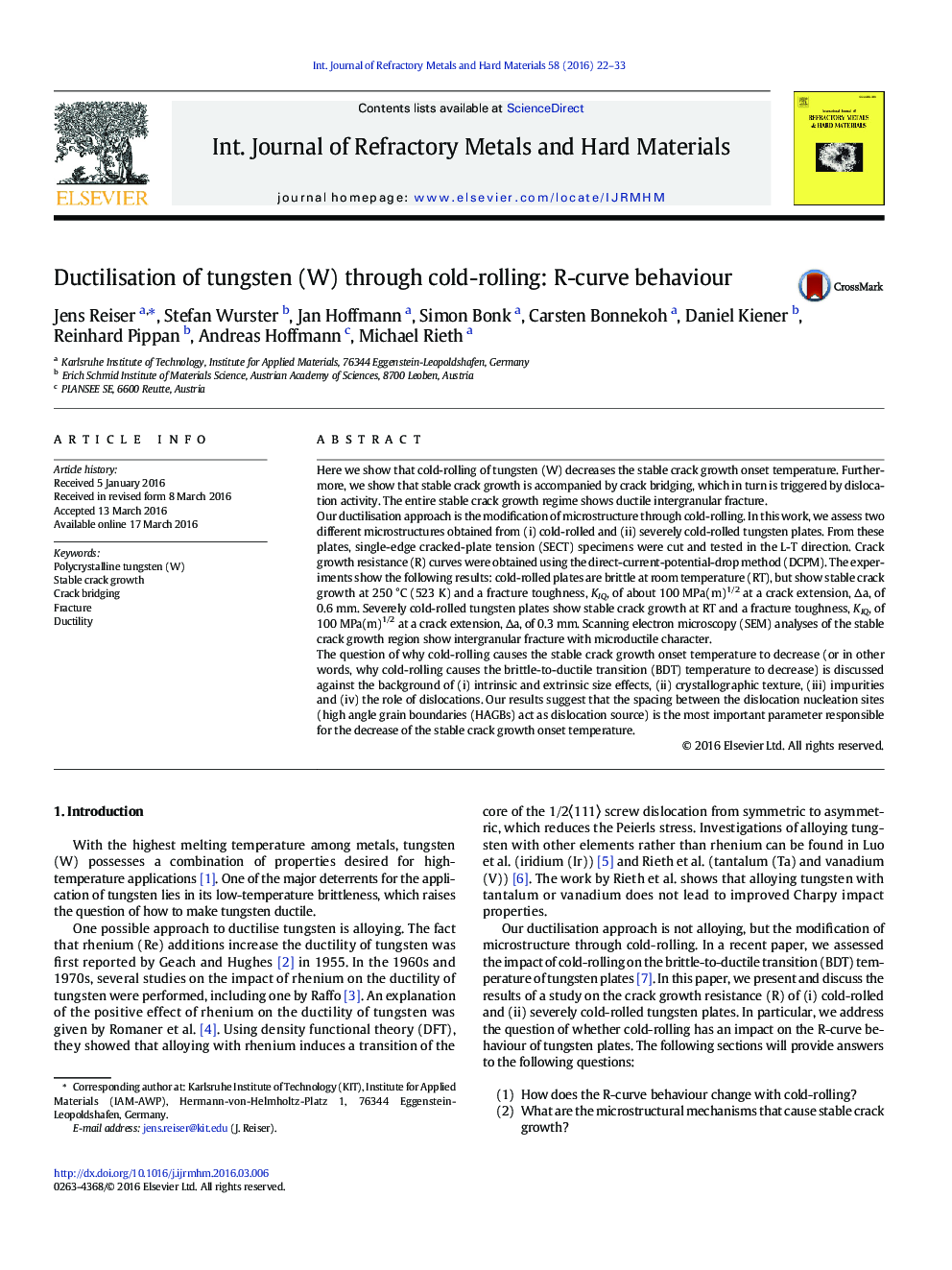| کد مقاله | کد نشریه | سال انتشار | مقاله انگلیسی | نسخه تمام متن |
|---|---|---|---|---|
| 1602621 | 1515961 | 2016 | 12 صفحه PDF | دانلود رایگان |

• Cold-rolled plates tested at 250 °C (523 K) and severely cold-rolled plates tested at room temperature show stable crack growth.
• Stable crack growth is accompanied by crack bridging.
• Crack bridging is triggered by dislocation activity.
• Ductile intergranular fracture occurs in the entire stable crack growth regime.
Here we show that cold-rolling of tungsten (W) decreases the stable crack growth onset temperature. Furthermore, we show that stable crack growth is accompanied by crack bridging, which in turn is triggered by dislocation activity. The entire stable crack growth regime shows ductile intergranular fracture.Our ductilisation approach is the modification of microstructure through cold-rolling. In this work, we assess two different microstructures obtained from (i) cold-rolled and (ii) severely cold-rolled tungsten plates. From these plates, single-edge cracked-plate tension (SECT) specimens were cut and tested in the L-T direction. Crack growth resistance (R) curves were obtained using the direct-current-potential-drop method (DCPM). The experiments show the following results: cold-rolled plates are brittle at room temperature (RT), but show stable crack growth at 250 °C (523 K) and a fracture toughness, KIQ, of about 100 MPa(m)1/2 at a crack extension, Δa, of 0.6 mm. Severely cold-rolled tungsten plates show stable crack growth at RT and a fracture toughness, KIQ, of 100 MPa(m)1/2 at a crack extension, Δa, of 0.3 mm. Scanning electron microscopy (SEM) analyses of the stable crack growth region show intergranular fracture with microductile character.The question of why cold-rolling causes the stable crack growth onset temperature to decrease (or in other words, why cold-rolling causes the brittle-to-ductile transition (BDT) temperature to decrease) is discussed against the background of (i) intrinsic and extrinsic size effects, (ii) crystallographic texture, (iii) impurities and (iv) the role of dislocations. Our results suggest that the spacing between the dislocation nucleation sites (high angle grain boundaries (HAGBs) act as dislocation source) is the most important parameter responsible for the decrease of the stable crack growth onset temperature.
Figure optionsDownload as PowerPoint slide
Journal: International Journal of Refractory Metals and Hard Materials - Volume 58, August 2016, Pages 22–33